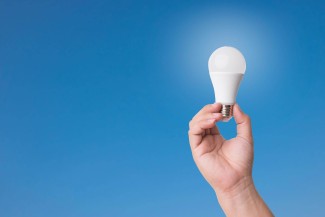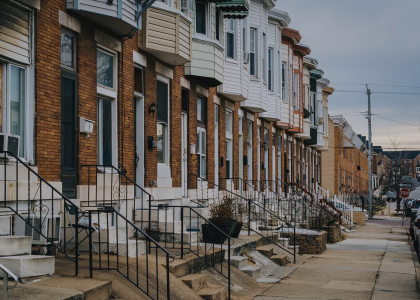With the Biden administration in its second month, we have already seen its interest in strengthening the energy-saving standards that cover dozens of household and commercial products, such as furnaces, refrigerators, and light bulbs. The new administration has staffed up with climate and clean energy leaders and initiated work to undo the previous administration’s slew of harmful rules.
Meanwhile, at the state level, momentum for new standards covering a range of energy- and water-using products is surging; a dozen states have legislation or rulemakings pending.
This one-two combination of federal and state action means that 2021 is shaping up as a big year for progress on new efficiency standards—progress that will contribute significantly to meeting climate and clean energy goals.
Biden administration off to a good start
On his first day in office, President Biden issued the “Executive Order on Protecting Public Health and the Environment and Restoring Science to Tackle the Climate Crisis.” He directed the Department of Energy (DOE) to propose major revisions to the “Process Rule” that governs how the agency develops new appliance standards. Initial proposed changes are due this month (DOE sent the White House a draft proposal for review last week) and any remaining cleanup is due by June. We expect the Biden team will eliminate a series of roadblocks and hurdles to future efficiency standards that the previous administration created in its rewrite of the rule.
The order also directed agencies to list actions taken during the previous administration that conflict with the Biden administration’s climate policy and consider “suspending, revising or rescinding” them. DOE submitted a list of 13 rules late last month. In addition to the Process Rule, the list includes rules that scaled back and overturned light bulb standards; weakened dishwasher, clothes washer, and dryer standards; allowed for multi-head showerheads that could use unlimited amounts of water; permitted manufacturers to self-waive test procedure requirements; and withdrew Obama-era proposed rules for furnaces and commercial water heaters and set barriers to strong future standards for these products. (Most of the 13 final actions are also subject to ongoing litigation brought by states and environmental and consumer groups.)
President Biden’s staffing choices for DOE are as promising as the early policy moves. Secretary Jennifer Granholm, who was recently confirmed on a bipartisan basis, Acting Undersecretary for Science and Energy Kathleen Hogan, and Principal Deputy Assistant Secretary for Energy Efficiency and Renewable Energy Kelly Speakes-Backman (currently serving as the Acting Assistant Secretary) are proven climate and clean energy leaders.
Fifty standards in four years
The new leadership has its work cut out for it. Clearing away the damage of the past four years is a critical start. Catching up on overdue deadlines for updating standards and meeting upcoming ones is an even bigger challenge. As of Inauguration Day, DOE had missed 28 legal deadlines for considering new standards. By January 2025, another 19 will come due. Some of the biggest savings opportunities include water heaters, furnaces, air conditioners and heat pumps, clothes dryers, refrigerators, and electric motors. But a collection of smaller opportunities (e.g., battery chargers, dehumidifiers, ice makers) add up to big savings, too.
DOE should not stop there. Work on several product categories initiated during the Obama years that are not subject to any specific legal deadline should be restarted (e.g., circulator pumps, commercial and industrial fans). One way DOE can score a quick efficiency win is by publishing a pool pump motor rule needed to close a loophole in standards that take effect in July. The previous administration proposed making this rule voluntary; DOE should make the final rule binding. Other candidates for new standards include products such as air purifiers that are included in ASAP’s model state standards legislation.
Altogether, DOE should update or establish standards for about 50 products (and a similar number of test procedures) within the next four years. That’s what’s needed to comply with the law, given the past four years of no progress. For perspective, the Obama administration updated about 50 standards too, but over eight years.
State momentum builds
States that upped their climate game to fill the void of federal leadership during the past four years show no signs of abating interest. Generally, states can set standards for products outside the scope of the federal program. They can also require that plumbing products such as showerheads and faucets meet stronger standards than the outdated federal levels enacted in 1992. Six states and the District of Columbia adopted standards based on ASAP’s model legislation over the past few years.
This year, legislatures and agencies in a dozen states (California, Connecticut, Hawaii, Maine, Maryland, Massachusetts, Nevada, New Jersey, New York, Oregon, Pennsylvania, and Rhode Island) are considering standards. Several have begun to develop innovative new standards for “grid-flexible” appliances that can adjust their power demand throughout the day to correspond to the availability of inexpensive, low-carbon electricity.
A key climate strategy
Improved efficiency standards—both federal and state—are crucial for reaching the president’s goals of a carbon-pollution-free electricity sector by 2035 and a net-zero carbon emissions economy by 2050. Our November 2020 report showed that improved U.S. standards could reduce greenhouse gas emissions by an amount equivalent to the emissions of 13 to 25 average-sized coal-fired power plants. Big electricity savings will also reduce summer peak electricity demand in 2035 by an amount equal to 7% of today’s peaks and in 2050 by nearly double that, freeing up power system capacity for electrifying transportation and space and water heating. That will unlock even larger emissions savings.
Strengthening water efficiency standards, too—such as for showerheads and faucets—can ease the burden on strained water supplies that have been further taxed by climate change, while also reducing energy use from water utilities and water heating.
If the new administration gets the job done, it could save the average American household $230 every year on utility bills by 2035. States can add to that total. But the clock is ticking, so acting quickly and decisively is crucial.




